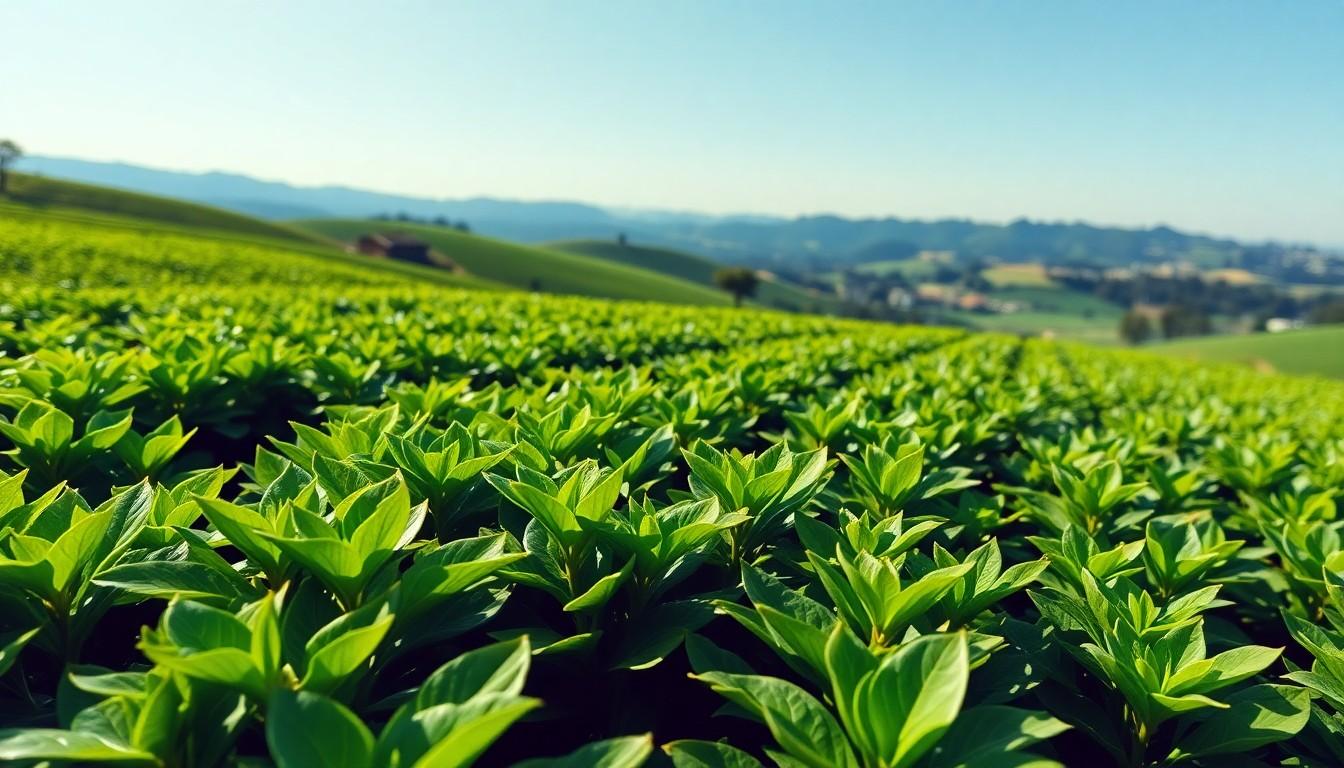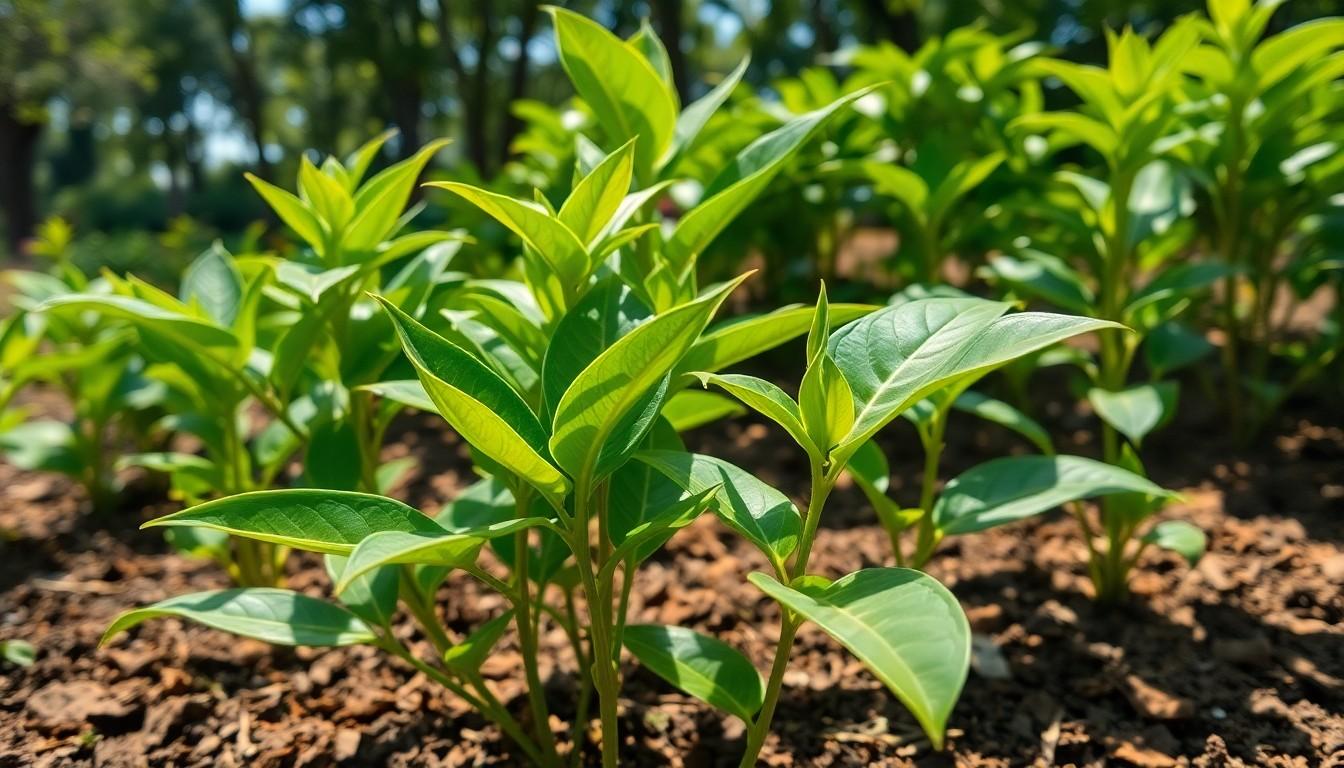If you’ve ever sipped a warm cup of tea and thought, “I want to grow my own,” you’re not alone. Tea plants are not just for the pros; they can thrive in your home with a little love and care. Imagine stepping into your kitchen and plucking fresh leaves for your brew. Sounds dreamy, right?
Tea Plant Care
Growing tea plants involves understanding various types and their unique requirements. Cultivating these plants offers both enjoyment and a fulfilling experience.
Types of Tea Plants
Three primary types of tea plants exist: Camellia sinensis var. sinensis, Camellia sinensis var. assamica, and Camellia sinensis var. cambodiensis. The first variety thrives in cooler climates, often found in China. Assamica, known for its robustness, adapts well to warmer, tropical environments, mainly in India. Cambodiensis produces unique flavors and grows in specific regions in Southeast Asia. Selecting the right type based on local climate is critical for successful growth.
Ideal Growing Conditions
Tea plants prefer well-drained, acidic soil with a pH of 5.5 to 6.5. Sufficient sunlight, ideally six hours daily, supports healthy growth. Temperatures between 60°F and 85°F favor optimal conditions. Humidity plays a significant role; relative humidity should maintain between 50% and 80%. Watering requires balancing; while tea plants need moisture, over-saturation harms their roots. Providing these conditions ensures attractive and productive tea plants.
Essential Care Tips for Tea Plants
Caring for tea plants requires attention to detail and an understanding of their specific needs. The following tips provide essential guidance for maintaining healthy growth.
Watering Techniques
Watering plays a crucial role in the health of tea plants. Regular, deep watering ensures roots receive adequate moisture. Check the top inch of soil; if it feels dry, it’s time to water. Consider using rainwater or distilled water, as tea plants prefer non-chlorinated sources. During dry spells, utilize mulch to retain soil moisture, preventing fluctuations that may stress the plants. Ensure good drainage to avoid root rot, as tea plants dislike sitting in water.
Soil Requirements
Soil quality significantly impacts the growth of tea plants. Aim for well-drained, acidic soil with a pH range between 5.0 and 6.5. Incorporating organic matter such as compost enhances soil fertility and texture. Choose a soil mix designed for acid-loving plants, ensuring it retains moisture while allowing excess water to escape. Regularly test soil pH to maintain optimal conditions. A nutrient-rich environment promotes robust growth, enhancing the quality of the tea leaves harvested.
Common Pests and Diseases
Tea plants face threats from various pests and diseases that can hinder their growth and affect leaf quality. Early identification and prevention measures help maintain healthy plants.
Identification and Prevention
Common pests include aphids, spider mites, and whiteflies. These insects cause damage by sucking sap from the leaves, leading to wilting and discoloration. It’s essential to monitor plants regularly for signs of infestations. Fungal diseases, like powdery mildew and root rot, also pose risks. Adequate air circulation reduces the chance of mildew, while proper watering techniques prevent root rot. Organic pesticides, such as neem oil, serve as effective preventive measures. Keeping plants healthy through optimal soil conditions minimizes vulnerabilities to pests and diseases.
Treatment Options
Addressing pest issues may require targeted interventions. Insecticidal soaps effectively eliminate soft-bodied pests like aphids and whiteflies. Regular applications are crucial for consistent results. For spider mites, increasing humidity around the plants can deter their presence. Treating fungal infections often requires fungicides specifically formulated for tea plants. Ensure adherence to application instructions for maximum efficacy. Employing companion planting with pest-repellent herbs further enhances natural defenses. Frequent inspection and prompt action contribute to a thriving tea plant garden.
Harvesting Tea Leaves
Harvesting tea leaves involves careful timing and specific techniques to ensure optimal flavor and quality. Understanding the right moment to pick leaves can significantly affect the final product.
Timing and Techniques
Timing plays a crucial role in leaf quality. Late spring to early summer marks the best period for harvesting, as new growth emerges. Picking young, tender leaves, typically the top two leaves and a bud, yields the finest flavor. Shears or scissors are effective tools for clean cuts, minimizing damage to the plant. Maintaining attention to the plant’s growth cycles ensures that harvests remain consistent throughout the growing season. Noticing changes in color and texture can also guide efficient harvesting.
Post-Harvest Processing
Post-harvest processing is essential to preserve the freshness of the tea leaves. Leaves must be promptly withered to reduce moisture and enhance flavors. This can be achieved through air drying or exposure to sunlight for several hours. Once wilted, the leaves undergo rolling to break down the leaf structure and release essential oils. The final step includes oxidation, a process that develops complex flavors. Each processing technique can vary based on the desired tea type, allowing for a diverse array of flavor profiles. Properly processed leaves lead to an enjoyable end product with rich aromas.
World of Flavor and Satisfaction
Growing tea plants at home opens up a world of flavor and satisfaction. With the right care and attention to detail, anyone can cultivate their own tea garden. By understanding the specific needs of different tea varieties and providing optimal growing conditions, it’s possible to enjoy a bountiful harvest.
Regular maintenance and pest management are essential for thriving plants. Harvesting at the right time and using proper techniques ensures the best quality tea leaves. The journey from plant to cup is both rewarding and enriching, making homegrown tea a delightful addition to any lifestyle. Embrace the process and savor the unique flavors that come from nurturing your own tea plants.



